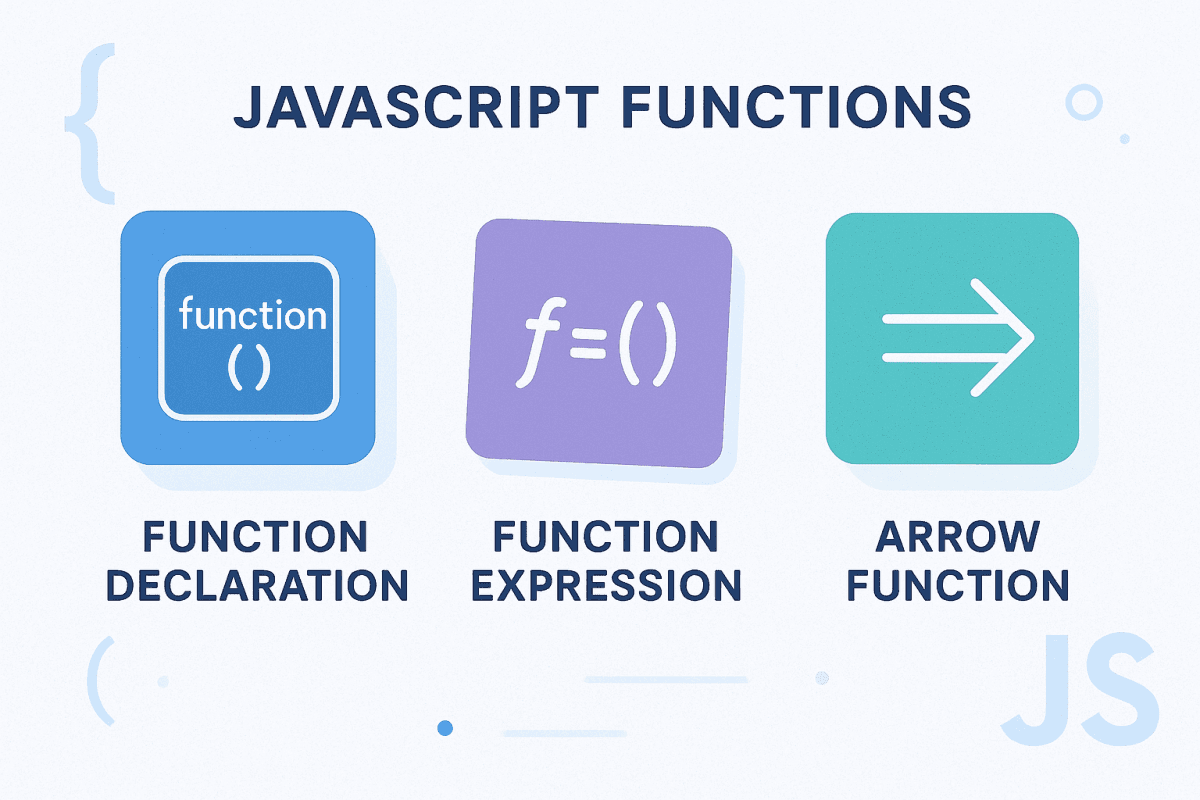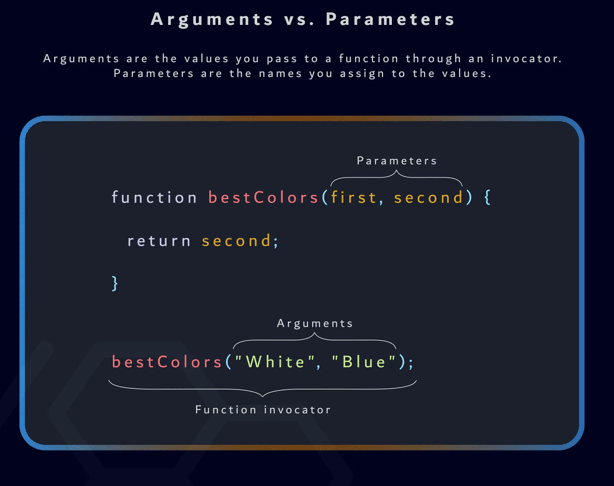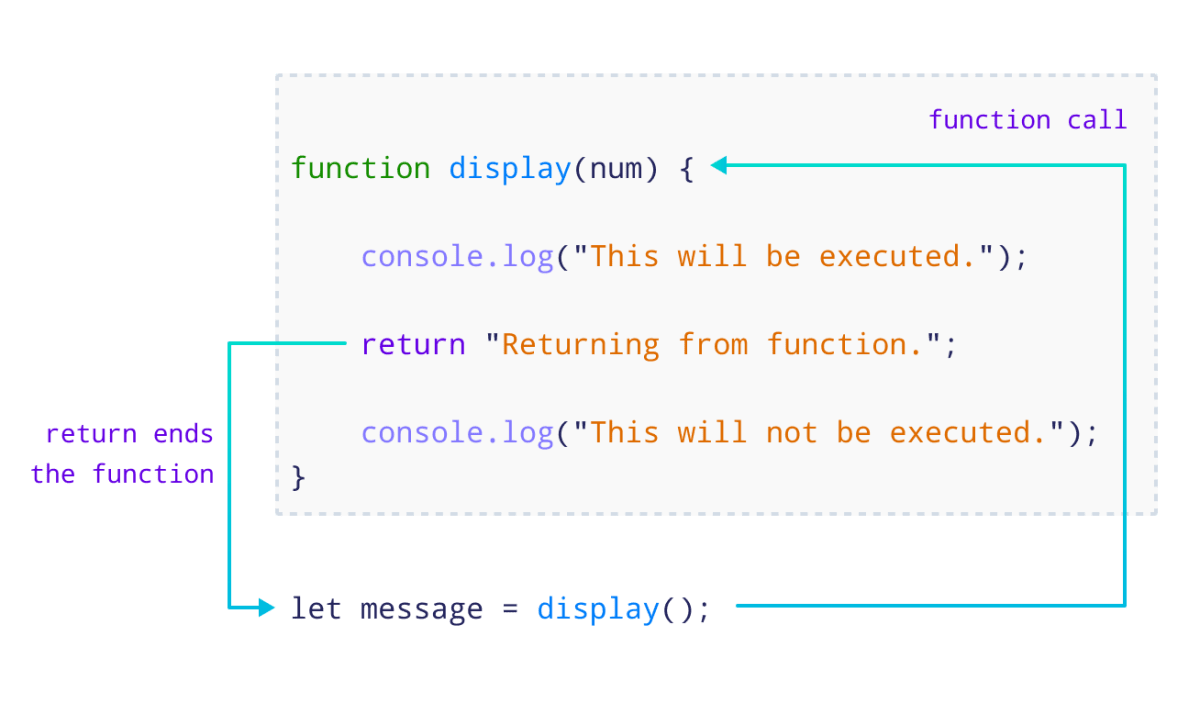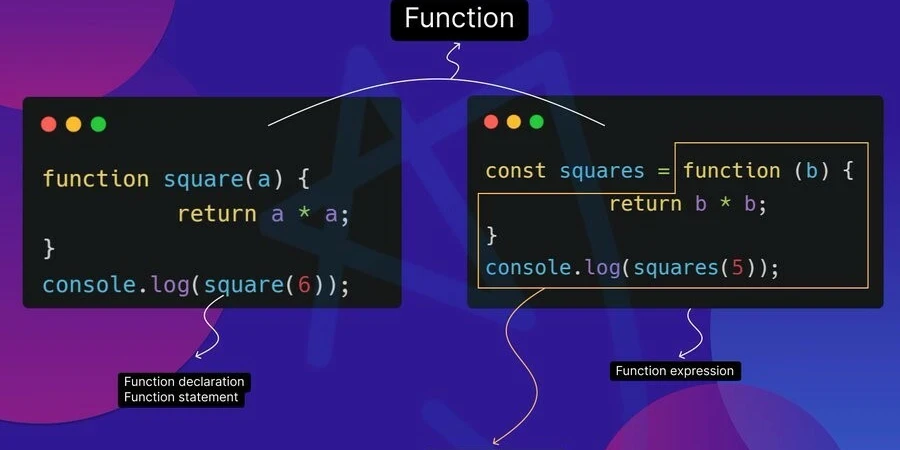JavaScript Functions: The Ultimate Guide to Declarations, Expressions and Arrow Functions

Introduction
Functions are the backbone of JavaScript, yet even intermediate developers often struggle with hoisting, scope, and how the this keyword behaves across different function types. This guide fixes that problem permanently.
The Promise
By the end of this guide, you will fully understand function declarations, expressions, and arrow functions, including how they're hoisted, how they bind this, how the arguments object behaves, and how to choose the correct function type in real-world scenarios.
The Gap
Most tutorials only teach syntax. They don't explain how JavaScript treats functions internally:
How are they hoisted?
What is their execution context?
Why does your callback lose this?
Why do arrow functions “fix” that?
This guide closes that gap.
1. What Is a Function (and Why Execution Context Matters)

A function is a reusable block of code that performs a specific task. It may accept parameters, process them, and optionally return a value.
Every function includes:
the function keyword
a name
parameters
a block of code inside { }
Understanding execution context is essential for learning how functions behave. (See guide on Execution Context.)
2. Parameters & Arguments
Understanding the difference between parameters and arguments is key:

2.1 Parameters vs Arguments
Parameters are the placeholders defined inside the function parentheses.
Arguments are the actual values passed to the function when you call (or invoke).
Example:
function multiply(a, b) { // a and b are parameters
return a * b;
}
multiply(4, 5); // 4 and 5 are arguments
2.2 Default Parameters
If arguments are missing, their values are undefined unless you set defaults.
function greet(name = "Guest") {
console.log(`Hello, ${name}`);
}
greet(); // "Hello, Guest"
3. Return Statement
The retrun statement is crucial because it sends a result back from the function and immediately stops the function's execution at that point.

If a function doesn't contain a retrun statement, or if the retrun statement statement has no associated expression, it implicitly returns the undefined value. While a function can only return a single value, you can return an object or an array if you need to pass back multiple pieces of data
function add(a, b) {
return a + b;
console.log("This will not be executed.");
}
If no return is provided, the function returns undefined.
Arrow functions without { } have implicit return.
Best Practices
Always use explicit return when using arrow functions with { }.
const f = (a, b) => {
return a + b;
};Ensure all code paths return something to avoid accidental undefined.
4. Function Declarations vs Function Expressions

JavaScript offers several syntaxes for defining functions, catering to different needs and coding styles:
4.1 Function Declarations
This method uses the function keyword followed by the function name. This is the most traditional way and is useful for functions that need to be globally accessible throughout their scope, even before they appear in the source code (thanks to hoisting).
sayHello(); // Works
function sayHello() {
console.log("Hello!");
}
Why this works:
Function declarations are hoisted with their entire definition, meaning JavaScript places them in memory before executing any code.
Best use-cases:
Utility functions
Configurable, reusable helpers
API/module-level functions
Key Takeaways
Fully hoisted, safe to call early.
Have their own dynamic this.
Support the arguments object.
4.2 Function Expressions
A function expression is created when you assign a function to a variable. The function is then invoked using the variable name.
With let/const expressions, the variable exists but cannot be accessed until its line of execution due to the Temporal Dead Zone (TDZ).
greet(); // TypeError
const greet = function () {
console.log("Hi!");
};
For var:
console.log(show); // undefined
var show = function () {
console.log("Var expression");
};
Key Takeaways
Assignment happens at runtime, not during hoisting.
this is dynamically bound, like declarations.
Supports the arguments object.
5. Arrow Functions (The Modern Approach)
Introduced in ES6, arrow functions provide a shorter syntax using the => (fat arrow) operator
• Shorter Syntax: They are often preferred for quick, short functions.
• Implicit Return: If the function body contains only a single expression, you can omit the curly braces and the return keyword.
• No this Binding: Arrow functions do not bind their own this keyword; instead, they inherit the this value from the enclosing scop
Syntax and Implied Return
Short and powerful:
const add = (a, b) => a + b;Block body requires an explicit return:
const add = (a, b) => {
return a + b;
};Implicitly returning an object requires parentheses:
const makeUser = (name) => ({ name });Lexical this
Arrow functions do not create their own this.They capture it from the enclosing scope.
Traditional Function Example (dynamic this):
const user = {
name: "Alice",
greet: function () {
console.log(this.name);
}
};
user.greet(); // "Alice"
Arrow Function Example (lexical this):
const user = {
name: "Alice",
greet: () => {
console.log(this.name);
}
};
user.greet(); // undefined
6. Anonymous Functions & Higher-Order Functions
6.1 Anonymous Functions
Functions without a name; often used when you don’t need to refer to them again by name.
setTimeout(function() {
console.log("Hi after 1s");
}, 1000);
// or arrow:
setTimeout(() => console.log("Hi after 1s"), 1000);6.2 Higher-Order Functions
A function is called a Higher-Order Function when it does one of two things:
It accepts another function as an argument, this passed function is known as a callback function.
It returns another function as its result.
Higher-order functions are a key part of modern JavaScript because they let us write cleaner, reusable, and more flexible code.
Common Built-in Higher-Order Functions in JavaScript:
Array methods:
map, filter, reduce, forEach, sort – these all take a callback function as an argument to perform operations on array elements.
setTimeout and setInterval:
These functions take a callback function to be executed after a delay or at regular intervals.
addEventListener:
This function takes a callback function to be executed when a specific event occurs on an HTML element.
Example:
function greetUser(name, greetingFunction) {
return greetingFunction(name);
}
function morningGreeting(name) {
return `Good morning, ${name}!`;
}
function eveningGreeting(name) {
return `Good evening, ${name}!`;
}
console.log(greetUser("Naeem", morningGreeting));
console.log(greetUser("Naeem", eveningGreeting));6.3 Why They Matter
Reusability: You can write generic functions that accept different behaviours as parameters.
Abstraction: Hide complexity by letting you pass "what to do" as a function.
Composition: Build complex logic from simpler blocks (map → filter → reduce).
Asynchrony: Callbacks underpin events, timers, promises.
6.4 Common Mistakes
Forgetting return in arrow function callbacks
Using arrow functions in methods needing this
Overusing anonymous functions
Calling function expressions before assignment
7. Real-World Scenarios
7.1 Utility Function
function formatPrice(amount, currency = 'USD') {
return `${currency} ${amount.toFixed(2)}`;
}
console.log(formatPrice(99.99)); // “USD 99.99”Declaration used because we’ll call it from many places.
Default parameter used.
Return value used for chaining or assignment.
7.2 Callback in Events
button.addEventListener('click', () => {
console.log('Button clicked');
});Arrow function used as an anonymous callback.
Lexical this not an issue here (since we don’t rely on this).
Real‑world: UI logic, event handling.
7.3 Higher-Order Function (Logger)
function makeLogger(prefix) {
return function(message) {
console.log(`[${prefix}] ${message}`);
};
}
const errorLogger = makeLogger('ERROR');
errorLogger('Something went wrong');makeLogger returns a function → a higher‑order function.
Usage: create customizable behaviour.
Example of returning a function for reuse.
7.4 Array Processing
const users = [
{name: 'Alice', age: 25},
{name: 'Bob', age: 17},
{name: 'Carol', age: 30},
];
const adults = users
.filter(u => u.age >= 18)
.map(u => u.name);
console.log(adults); // ['Alice', 'Carol']filter & map are higher‑order functions (accept callbacks).
Arrow functions make inline callback concise
7.5 Common Mistake
const numbers = [1,2,3,4];
numbers.map(n => { n * n }); // WrongBecause the body has braces but no return.
Fix:
numbers.map(n => n * n);
// or
numbers.map(n => { return n n; })8. The 99% Problem Solver: Context, Pitfalls, Best Practices
Pitfall 1: When NOT to Use Arrow Functions
Avoid for:
Object methods
Class methods
Prototype methods
Constructors
Functions needing arguments
Example:
const counter = {
value: 0,
increment: () => {
this.value++; // this is not counter
}
};
Pitfall 2: Silent this Error in Callbacks
function Person() {
this.age = 0;
setInterval(function () {
this.age++; // this refers to global object
}, 1000);
}
Correct:
function Person() {
this.age = 0;
setInterval(() => {
this.age++; // ✔ lexical this
}, 1000);
}
Final Best Practices
Use declarations for shared utilities
Use arrow functions for callbacks
Avoid arrow functions for object or class methods
Use expressions for controlled availability
Remember: arrow functions have no this, no arguments, no new
9. Conclusion & Next Steps
Recap
Function declarations → hoisted, dynamic this
Function expressions → runtime-bound
Arrow functions → lexical this, no arguments
FAQs:
1. What is the difference between a Function Declaration and a Function Expression?
A function declaration is fully hoisted and can be called before it appears in code.
A function expression is not hoisted with its value, so it must be called after it’s defined.
2. Why can I call some functions before they’re defined?
Because function declarations are hoisted, meaning JavaScript loads them during the creation phase.
Function expressions and arrow functions are not hoisted the same way.
3. When should I use an Arrow Function?
Use arrow functions for short utilities, callbacks, and array methods.
Avoid them when you need this, arguments, or want to use new.
4. Why does this behave differently in arrow functions?
Arrow functions don’t create their own this.
They use this from the surrounding scope, which is called lexical this.
5. Why does my arrow function return undefined?
Most commonly due to incorrect implicit return syntax, especially when returning objects.
Wrap objects in parentheses:
() => ({ key: "value" })6. Why is my function not receiving parameters?
You might have forgotten to pass arguments, passed the wrong type, or overridden the variable inside the function.
7. Are arrow functions always better?
No. They’re great for short, functional code, but traditional functions are better for methods, constructors, and places where you need your own this.
Join the conversation
Sign in to share your thoughts and engage with other readers.
No comments yet
Be the first to share your thoughts!